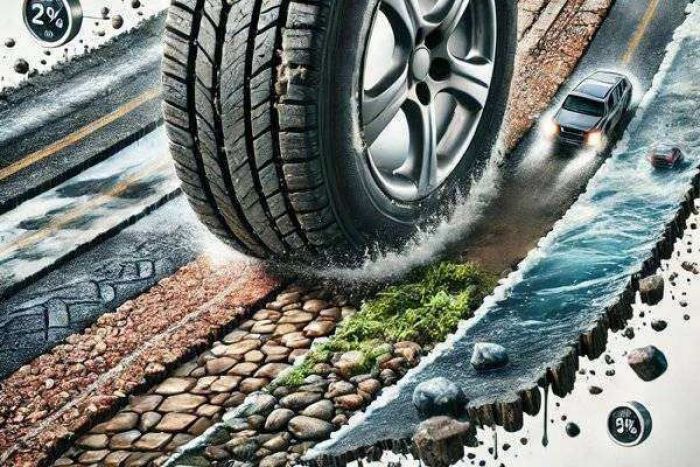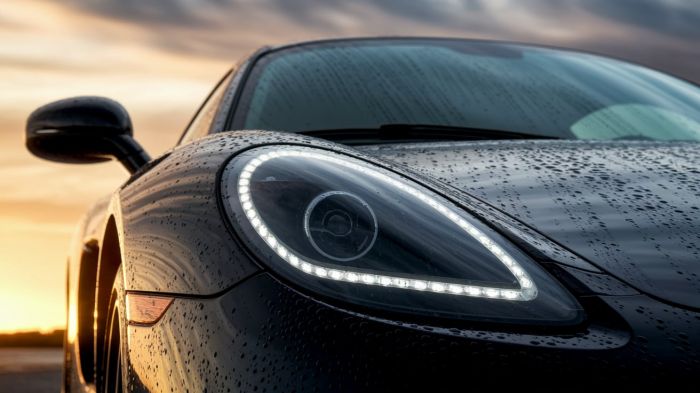Yamaha greeted 2022 with a bang by introducing a barrage of new all-terrain vehicle (ATV) and side-by-side (SxS) models to start the year right. The famous brand once again brought its winning pure-sport, high-performance, off-road vehicle formula in its YFZ 450 range.
The Yamaha YFZ 450 hadn't changed much for its present generation model but it still never fails to impress. If you are planning on buying the ATV, be it the base YFZ 450R or YFZ 450R SE, you are certainly in for a treat. For a very affordable manufacturer's retail price (MSRP) of $9,199, you will surely enjoy the plethora of features it offers to make your off-road recreational activities memorable.
However, behind the visually refreshing, sporty design and mind-blowing power of the vehicle, are some issues that have plagued its lineup over the years. That's exactly what we will uncover here so that you can think it through carefully before buying one, or if you have already purchased one, at least you will know what to expect from it based on its history.

In this article, we will run you over the issues experienced by the current generation of the YFZ 450, which commonly manifest in the following areas:
- Engine
- Transmission
- Chassis
- Suspension
These are based on reports and personal accounts of owners of the present and previous models of the Yamaha ATV as well as inputs from mechanics who have long-time experience working with them.
1. Engine
The Yamaha YFZ 450 is built with high-performance specs that make it a force to be reckoned with in ATV races. It possesses a 449 cc liquid-cooled, dual overhead camshaft (DOHC), four stoke engine featuring five titanium valves. The unit comes with a 95 mm bore and 63.4 mm stroke. The 11.8:1 compression ratio of the engine means more power production as it can draw out more energy from the combustion process at optimal levels.
In addition, the power unit is highlighted by its use of the Yamaha Fuel Injection (YFI) system with a 42 mm Mikuni throttle body and 12-hold injector for more precision in its fuel delivery. The technology also enables an easy start-up for the motor using Idle Speed Control (ISC).
The configuration of the power unit lets the YFZ 450 produce up to 53 hp at 9,700 rpm and 32.7 lb-ft of torque. Since the ATV is built for racing, it is versatile enough to handle mods that boost its total output to 200 hp.
Despite the very impressive power unit of the YFZ 450, it has its share of complaints from some owners. A common complaint related to the engine of the YFZ 450 is bogging or when it does not fire up properly at all. Another complaint has to do with its fuel economy, but this is something of a given trait already because its genetic makeup is built for racing and not for utility.
a. Bogging Problems
Bogging can be caused by one or a combination of the following:
- Faulty Spark Plugs: One common cause of engine bogging is fouled spark plugs. When spark plugs get fouled, they don't fire properly, which can lead to engine bogging. The solution is to clean or replace the spark plugs.
- Dirty Air Filter: Another common cause of engine bogging is a dirty air filter. A dirty air filter restricts airflow to the engine, causing it to bog down. The solution is to clean or replace the air filter.
- Fuel System Problem: A third common cause of engine bogging is a fuel system issue. If the fuel system is not delivering enough fuel to the engine, it will bog down. The solution is to clean or replace the fuel filter, and/or adjust the fuel injectors.
b. Fuel Economy Issues
Moreover, the engine configuration, particularly the DOHC system, focuses on producing more power, hence, sacrificing fuel efficiency. Thus, other complaints stem from its fuel economy:
Uses Too Much Fuel: The main cause of poor fuel economy in the YFZ 450R ATV is its high-performance engine. This engine is designed for speed and power, and as a result, it isn't very efficient when it comes to fuel consumption. Since this is an inherent trait of the ATV due to its racing architecture and engineering, there are only a few things that you can do to improve its fuel economy so you won't drain its 3.8-gallon fuel tank quickly.
First, make sure that you keep the engine tuned and in good working order. Second, try not to over-rev unless absolutely necessary like when you are racing. Third, make sure that you inflate the tires to the correct pressure so that you can reduce rolling resistance and help to improve fuel economy.
By following these simple tips, you should be able to improve the fuel economy of your YFZ 450R ATV and get more miles per gallon.
2. Transmission
Since the YFZ 450 is specifically made for racing it uses a chain drive transmission, unlike other ATVs that use automatic transmission gearboxes. It also lacks a reverse because it's simply made to go forward and make laps as quick as it can. Basically, it's purely made for recreation. The setup allows the YFZ 450 to reach top speeds of up to 75 mph on stock and more if modified.
Chain Drive Issues: Chain drive systems have several advantages over other types of power transmission, such as belts and gears. They are less expensive to manufacture, require less maintenance and are more durable. However, chain drives also have some disadvantages. They can be noisy and may require more frequent adjustments, especially if you regularly push your vehicle to its limit during races or other activities. Additionally, if the chain breaks, it can be difficult to repair. In this case, a replacement may be needed.
3. Chassis
The YFZ 450 sports a very rigid chassis that is built to primarily withstand the rigors of racing and off-roading. It is also reinforced with a sturdy suspension.
Vibration and Poor Handling: One of the most common complaints about the Yamaha YFZ 450R ATV is chassis problems. These can manifest in several ways, including premature wear and tear, vibration issues, and handling difficulties.
There are a few different causes of chassis problems on the YFZ 450R. One is improper suspension setup. If the suspension is not properly tuned, it can cause a number of problems, including the symptoms stated here.
Another common cause of chassis problems on the YFZ 450R is incorrect tire pressure. If the tires are not inflated to the proper pressure, they can cause premature wear and tear on the ATV's chassis. Additionally, incorrect tire pressure can lead to vibration issues and poor handling.
There are a few quick-fix solutions to chassis problems on the YFZ 450R ATV. One is to check the suspension and make sure it is properly tuned. Another solution is to check the tire pressure and inflate the tires to the proper pressure. If the problem persists, it may be necessary to replace the ATV's chassis.
4. Suspension
The chassis of the YFZ 450 is supported by a suspension featuring a 9.8-inch travel independent double-wishbone with coated shocks in front, and 11-inch travel cast aluminum swingarm shock in the rear. Both of which have high/low-speed compression plus rebound and threaded preload adjustment.
Some users have complained about rear axle issues in the Yamaha YFZ 450. The most common symptom of this problem is a clicking noise coming from the rear end of the vehicle, especially when turning.
Clicking Noises When Turning: These are commonly experienced by those who use their ATVs for racing, as such activity can significantly advance the wear and tear of some key components of the unit. There are several possible causes for this issue like worn-out bushings, loose bolts, damaged CV joint, worn bearings, and damaged differential.
The bushings that connect the suspension arms to the frame can wear out over time, causing them to loosen and make noise. To fix this, simply replace the worn-out bushings with new ones.
Another possible cause of rear axle noise is loose bolts. Make sure to check all the bolts that hold the suspension components in place and tighten them if necessary.
The CV joint is what allows the wheels to turn while the suspension moves up and down. If this joint is damaged, it can cause unusual noises. To fix this, you will need to replace the damaged CV joint with a new one.
The bearings that allow the wheels to rotate can also wear out over time. If they are worn out, they will make noise and may even cause the wheels to wobble. To fix this, simply replace the worn-out bearings with new ones.
The differential is what transfers power from the engine to the wheels. If it is damaged, it can cause clicking noises and may even prevent the vehicle from moving. To fix this, you will need to replace the damaged differential with a new one.
Conclusion
Have you encountered any of these problems, or have you noticed some of the symptoms indicated here manifest during your ride? If so, try to locate the root of the problem using the quick guide here and apply the necessary course of action to immediately resolve it. However, if you find that the problems persist after doing these things, it may be time to bring it to a certified mechanic specializing in the Yamaha YFZ 450.
About the authors
The CarAraC research team is composed of seasoned auto mechanics and automotive industry professionals, including individuals with advanced degrees and certifications in their field. Our team members boast prestigious credentials, reflecting their extensive knowledge and skills. These qualifications include: IMI: Institute of the Motor Industry, ASE-Certified Master Automobile Technicians; Coventry University, Graduate of MA in Automotive Journalism; Politecnico di Torino, Italy, MS Automotive Engineering; Ss. Cyril and Methodius University in Skopje, Mechanical University in Skopje; TOC Automotive College; DHA Suffa University, Department of Mechanical Engineering






Add comment